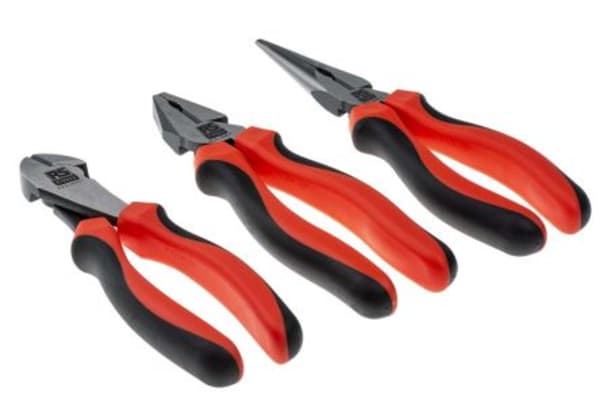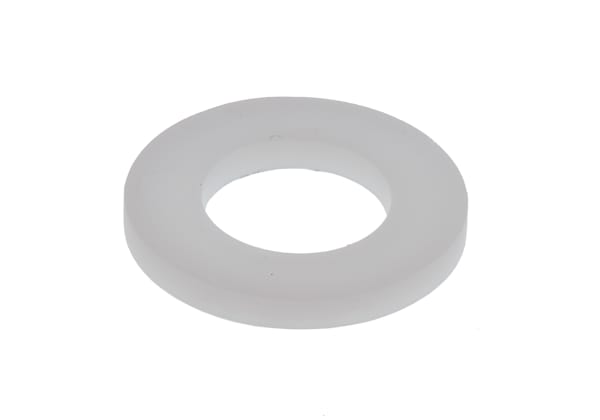- Published 12 Jan 2023
- Last Modified 29 Aug 2023
- 7 min
A Complete Guide to Circlips
Circlips are circular clips used in a wide range of applications. Learn more in our comprehensive guide.

What are Circlips?
Circlips (also known as retaining rings) are types of fastener which look like flexible, open-ended rings. Circlips are typically made from stainless steel and similar metals. Alternative names for circlips include retaining rings, retaining clips, C-type, Jesus clips, snap rings, and E-type.
Retaining rings serve as a removable shoulder within an assembly to retain components in a bore or on a shaft. An external flat spring ring splits at a particular point so it can be sprung open and fitted around a bore or housing, before closing into a tightly fitting annular recess around the shaft. Conversely, an internal circlip can be closed to fit inside a shaft before springing back into shape and forming a shoulder in the housing.
Did You Know?
Circlips come in two main types – internal and external. An external circlip is designed to fit around a bore, whereas internal circlips are made to fit inside a cylindrical shaft or housing.
Circlip Pliers
Most retaining rings, such as E-type circlips, are designed to be suitable for use with circlip pliers. Circlip pliers are a particular type of pliers with the specific purpose of working with snap rings. These hand tools feature a specially designed tip which is ideal for installing and removing circlips with ease.
There are various different types of circlip pliers, all designed for working with retaining rings but featuring subtle differences. The two main types to be aware of are internal circlip pliers and external circlip pliers, each designed to be used with the corresponding circlip type. Different sized circlip pliers are also available, offering greater flexibility depending on the size of the circlip to be installed or removed.
To discover more about circlip pliers, their uses, and the different types available, you can check out our handy guide to circlip pliers.
Types of Circlips
Various types of circlips are available, each suitable for different applications and environments. Some of the key circlip types are detailed below.
Internal Circlips
As already mentioned, internal circlips are designed to fit within a bore or housing. They are typically available in both metric and imperial sizes, for convenience, and have a wide range of uses. Internal circlip types are highly durable and usually have a longer service life than alternative circlip types, making them a preferred choice for many. Additionally, internal circlips can also offer resistance to corrosion when located inside equipment.
External Circlips
Conversely, external circlip types are designed to fit tightly around a shaft. External circlips can be chosen to replace threaded sleeves, rivets, cotter pins, set collars, nuts, machined shoulders and similar bulky fastening devices. They are also available in both metric and imperial sizes but one of the additional benefits of external circlips is that they can help to save space.
Stainless Steel Circlips
Stainless steel circlips are one of the most common materials used in the manufacture of retaining rings. Stainless steel is preferred due to its tough, durable nature, meaning that the circlips can last for longer once installed. Circlips are also designed to be semi-flexible, allowing for easier installation and removal without damaging the shaft, housing, or the circlip itself.
E-Type Circlips
E-clips are installed onto bores radially as opposed to axially. Like standard circlips, they fit in a groove, but E-type circlips don’t feature grip holes, so they are not suitable for use with circlip pliers. Instead, E-type circlips can be pushed into place with a specially-designed tool or a standard pair of pliers when fitted.
Circlip Sizes

Circlips and retaining rings come in many different shapes and sizes, offering a wide level of flexibility for varying applications. Small circlips are most common and the majority of circlips are less than 50mm (or 2 inches) in diameter. However, it is possible to get large circlips which can go up to 400 or even 500mm in diameter.
It is always important to choose the right circlip sizes for the job at hand. The retaining ring must be suitable to fit inside the shaft where it will be installed (internal circlips) or should fit snugly around the outside of the housing (external circlips). If the retaining ring is incorrectly sized, the installation will be significantly more challenging, and it may lead to further problems in the future if left unchecked.
How to Install a Circlip
The best way to install the retaining ring will depend on what type of circlip it is – internal, external, E-type, C-type, or retaining ring. Therefore, in order to identify how best to install a circlip, you must first determine if you require an internal or an external circlip for the installation.
How to Install External Circlips
To install an external circlip, follow the instructions below:
- Firstly, obtain a pair of external circlip pliers which fit into the circlip end holes
- Next, insert the tips. Fit the plier tips into the grips on the ends of the circlip to be used
- Squeeze the handles; this will open the tips and expand the circlip
- Fit the circlip in the circlip groove to complete the installation process
It is also worth bearing in mind that because circlips are stamped out of sheet metal, they have a smooth side and a rough side. The clip should be installed with the smooth side facing the part and the rough side facing outwards in order to help prevent damage.
How to Install Internal Circlips
The following steps outline the process for installing internal circlips:
- Begin by choosing a pair of internal circlip pliers which fit into the circlip end holes
- You should then fit the plier tips into the holes on the ends of the retaining ring to be installed
- Squeeze the handles to close the circlip plier handles and contract the circlip to the desired size
- Guide the ring into the circlip groove and release the pliers
Once again, it is important to take the smooth and rough sides of the circlip into account when completing the installation. Internal circlips should always be installed with the smooth side facing the part and the rough side facing outwards in order to help guard against the possibility of damage.
How to Remove a Circlip
Similarly to installation, the best way to remove a circlip will depend on the type of circlip in question.
How to Remove External Circlips
Follow the steps below to successfully remove external circlips:
- Choose a pair of external circlip pliers which fit into the circlip end holes
- Grip the holes on each end of the retaining ring you wish to remove, using the pliers
- Use the pliers to carefully remove the circlip from the groove and remove
How to Remove Internal Circlips
The steps outlined below explain how to remove internal circlips:
- Select a pair of internal circlip pliers and use the plier tips to grip the holes on the ends of the clip to be removed
- Squeeze the plier handles to gently release the circlip from the groove then simply remove it from the shaft
Circlip Sets
A circlip set will typically feature a selection of circlips. Sets usually include a variety of common sized retaining rings, alongside a range of internal, external, and E-clips to provide greater flexibility to the user.
Ideal for professionals regularly working with circlips of different types and sizes, a circlip kit is particularly handy if you are unsure what size circlip you will need for future applications.
FAQs
How Do You Remove Circlips Without Holes?
If you need to remove a circlip that doesn’t have holes on the ends, it is recommended to use a pair of narrow tip pliers. The fine tips of the pliers should be able to securely hold the snap ring and enable careful removal.
How Do You Remove Circlips Without Pliers?
It is always recommended to use a suitable pair of pliers when removing circlips as it is very tricky to remove a circlip without the use of a tool. Careless removal or the use of improper tools could risk causing damage to the circlip or the equipment, so it is best to keep a pair of pliers to hand. If you do not have access to circlip pliers, a pair of narrow tip or needle nose pliers are the next best option for safe retaining ring removal.
How Do You Measure External Circlip Size?
When measuring the size of an external circlip, you should measure the nominal size of the groove diameter. Do not measure the shaft diameter as this will result in an inaccurate measurement when comparing external circlip sizes.
How Do You Measure Internal Circlip Size?
In order to accurately measure the size of an internal circlip, you will need to measure the nominal size of the groove diameter. Avoid measuring the bore diameter as this will not provide the correct size.



